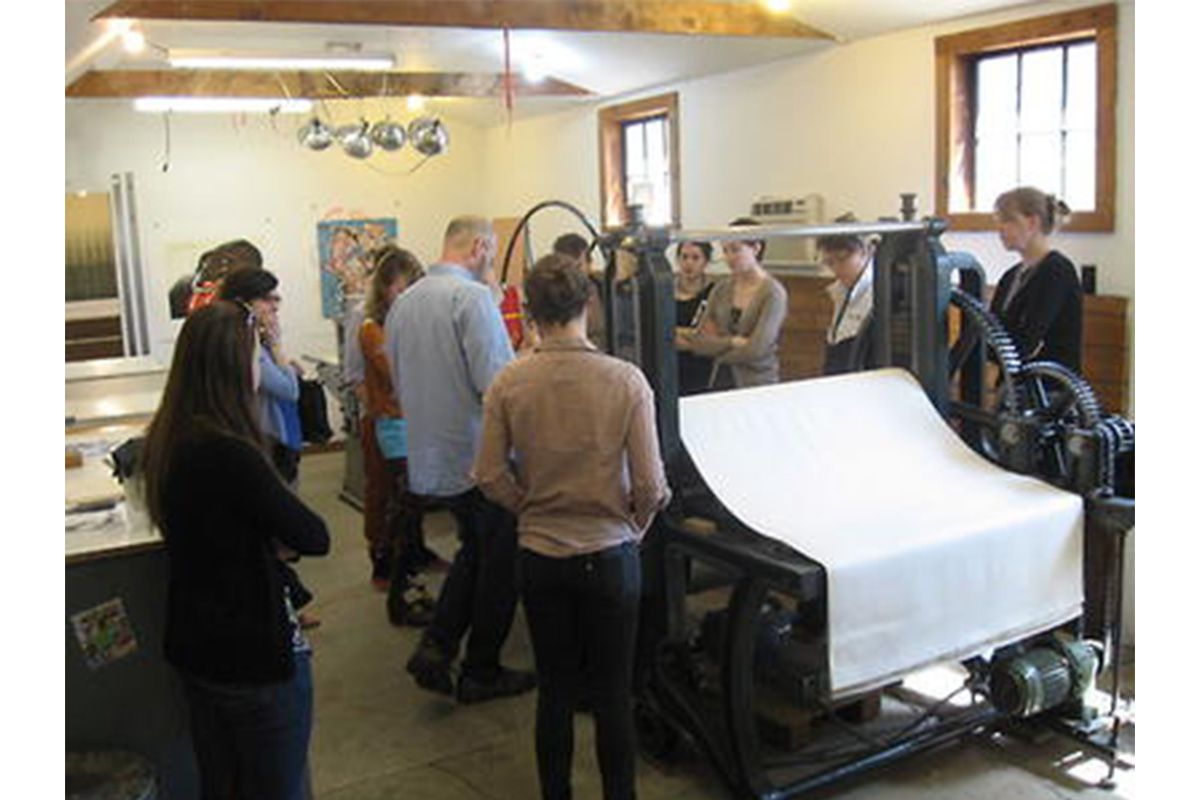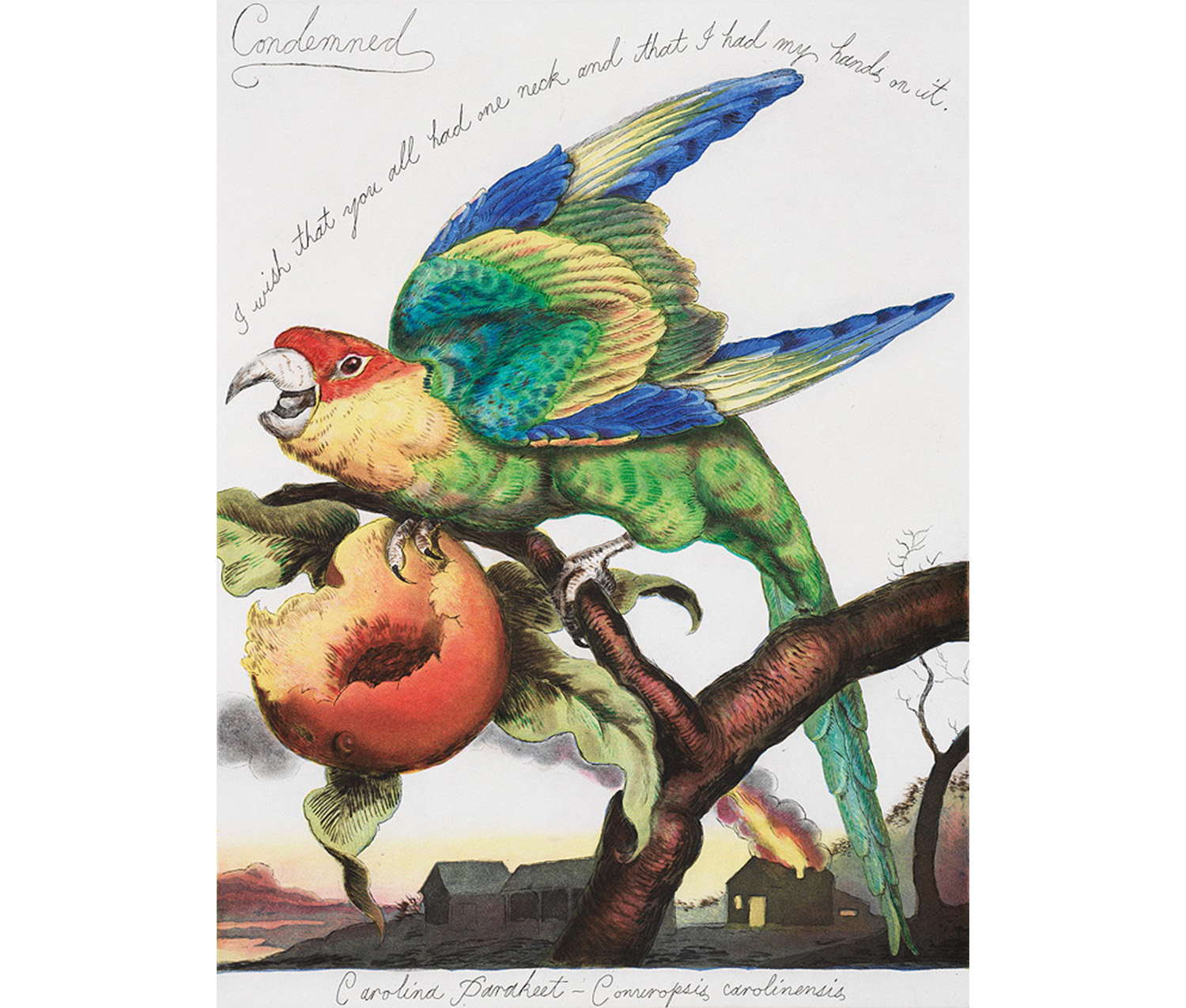
Walton Ford and a Trip to Wingate Studios
Guest blogger Emma Casey is a Smith College student, class of 2015, majoring in Spanish. She is the 2013-2015 STRIDE Scholar in the Cunningham Center for Prints, Drawings, and Photographs.
This past spring, my advanced printmaking class took a field trip to Peter Pettengill’s professional intaglio workshop and publisher, Wingate Studio in southwestern New Hampshire (pictured above). Pettengill, Wingate’s founder and master printmaker, was trained at Crown Point Press in San Francisco from 1979 through 1985, at which point he opened Wingate. He gave us a tour of his studio and showed us works by various artists made prints at Wingate over the past few years.
The work of contemporary American artist Walton Ford drew my attention. Ford works in the style of 19th century naturalist artists, namely ornithologist John James Audubon, to create naturalistic illustrations, paintings, and prints of avifauna (birds). From afar, Ford’s works appear strictly observational, but upon closer scrutiny, many levels of narrative and socio-historical critique become evident. Each avifauna subject is depicted life-sized, and is often accompanied by text. Ford’s backgrounds have a sketchy, less defined quality, and stain-like splotches appear on the borders in a faux antique style.

Walton Ford. American, born 1960. Condemned, 2004–2007. Etching and aquatint printed in color on paper. Gift of Walton Ford through the Smith College Print Workshop. Photography by Petegorsky/Gipe. SC 2007.6.
The ambition of his prints is remarkable. The hours involved in etching six tightly-registered copper intaglio plates for each print shows in the precision and skill of his works. Ford’s beautifully executed prints and watercolors critique human actions and history. Drawing from colonialism, industrialization and environmentalism, Ford questions the effects of these phenomena on the animal world through both serious and joking imagery.
Ford’s Condemned, a print in the SCMA collection, depicts an extinct Carolina Parakeet. By the 1880s, the birds’ numbers suffered at the hands of farmers who considered them an agricultural pest. Flocks plagued orchards, destroying fruit in search of seeds. The American Ornithologists Union declared the Parakeet extinct in 1939. Ford has memorialized the small bird, including its scientific name. Condemnedincorporates a quote from the American serial killer Carl Panzram (1891-1930), who wrote to capital punishment protesters while on death row in 1929, “I wish that you all had one neck and that I had my hands on it.” Ford appropriates this quote, which is prominently scrawled above the Carolina Parakeet. It is ambiguous whether these words are the voice of a farmer or one of the birds; as each is ruining the other’s life, but with different consequences of varying severity.